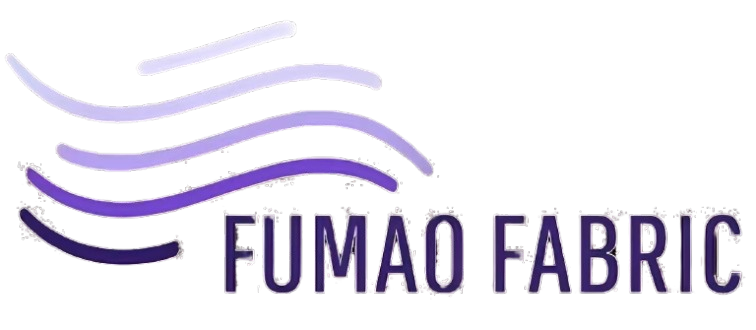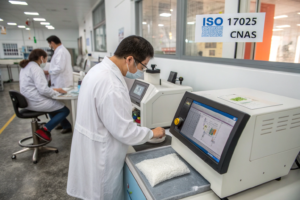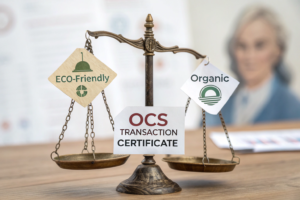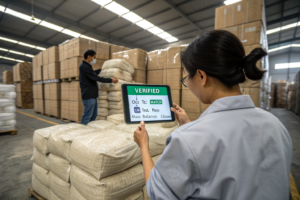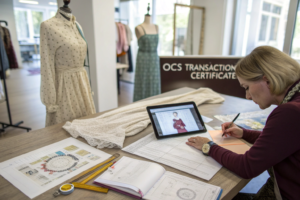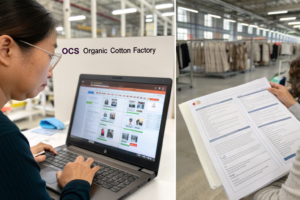Drape is the soul of a fabric. It determines how a garment flows, clings, or folds on the human body. Whether you’re designing a couture evening gown or a casual blouse, understanding a fabric’s drapability is essential. But how do you measure something so visual and tactile?
The fabric drape coefficient is a scientific measurement (ranging from 0 to 1) that quantifies how well a fabric hangs under its own weight. A lower drape coefficient indicates a softer, flowier fabric, while a higher coefficient means a stiffer, more structured material.
As a fabric manufacturer and developer based in Keqiao, China, I’ve helped brands around the world select the right drape profile for fashion, uniforms, and technical applications. In this article, I’ll walk you through how to calculate the drape coefficient, what it means, and how to source fabric with the ideal drape for your design.
What Is Fabric Drape and Why Does It Matter?
Fabric drape refers to how a material falls or hangs under gravity. It affects not just aesthetics but also comfort, fit, and performance. Think of the difference between a silk scarf and a canvas tote—both have purpose, but their drape behavior is entirely different.
Drapability impacts silhouette, movement, and the emotional impression a garment makes.
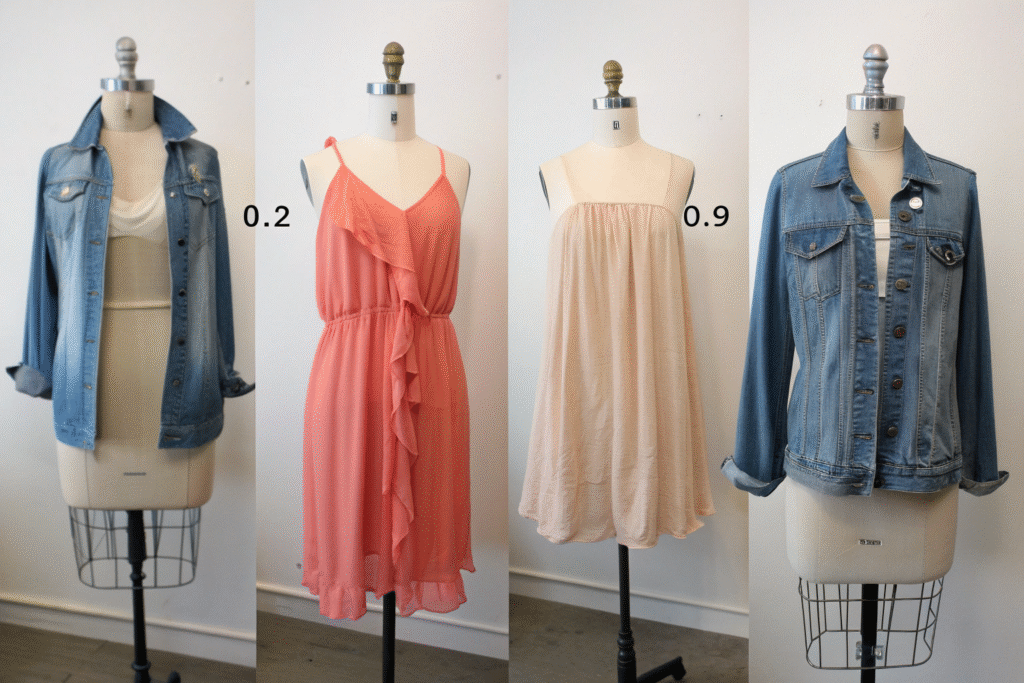
What Influences Fabric Drape?
- Fiber Content: Natural fibers like silk and rayon drape better than stiff synthetics.
- Weave Structure: Loose weaves tend to drape more than tight, twill structures.
- Weight & Thickness: Heavier fabrics resist folding easily.
- Finish: Softeners or coatings can enhance or reduce drape.
For example, viscose rayon is commonly used in drapey blouses, while canvas is chosen for bags or uniforms due to its stiffness.
Visual vs. Quantitative Drape
While drape is often judged by eye, professional buyers and developers rely on quantitative metrics like the drape coefficient for consistent evaluation and production specs.
How Do You Measure Fabric Drape Coefficient?
To standardize fabric drapability, we calculate a value called the drape coefficient (DC) using controlled lab methods. This test shows how much a fabric spreads beyond a support disk when hanging freely.
Drape Coefficient = (Area of Fabric Shadow – Area of Supporting Disk) ÷ (Area of Original Fabric – Area of Supporting Disk)
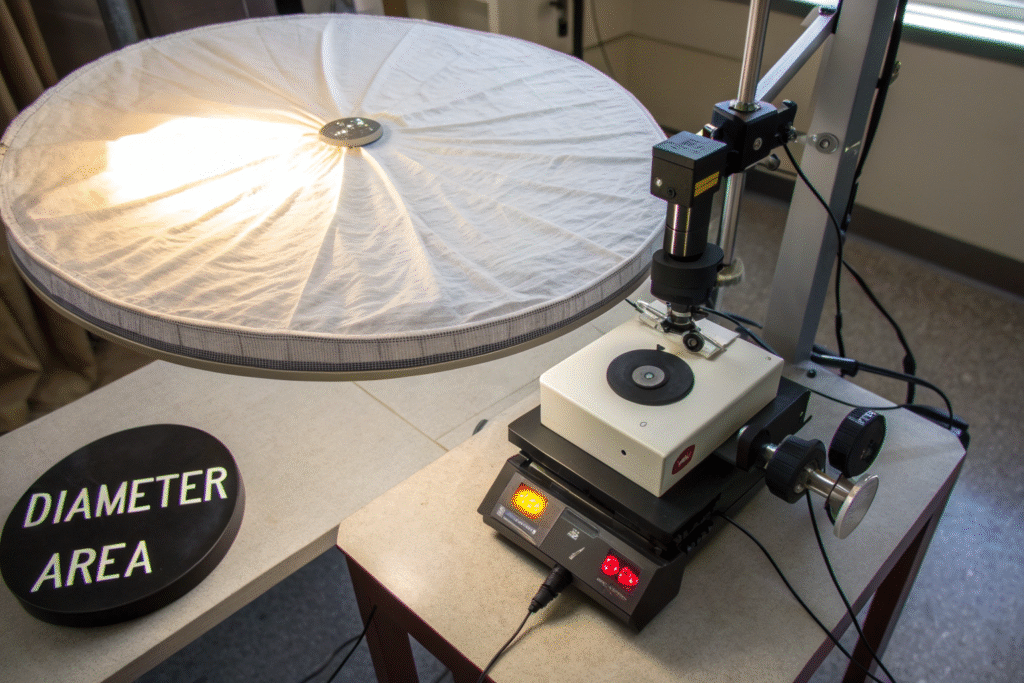
Step-by-Step Drape Test
- Cut a fabric circle, usually 24 cm in diameter.
- Place it on a disk support (typically 18 cm diameter).
- Shine light from above to cast a shadow onto a white surface.
- Trace and measure the shadow’s area.
- Apply the drape coefficient formula.
What Does the Drape Coefficient Mean?
| Drape Coefficient | Description | Fabric Behavior |
|---|---|---|
| 0.10–0.30 | Very Soft | Flowy dresses, scarves |
| 0.31–0.50 | Soft | Blouses, shirts |
| 0.51–0.70 | Moderate | Uniforms, suits |
| 0.71–0.90 | Stiff | Outerwear, structured skirts |
| 0.91–1.00 | Very Stiff | Technical or industrial use |
Our CNAS-certified lab provides fabric drape testing using ISO 9073-9 and ASTM D1388 standards. Reports include coefficient scores, density, and deformation under load.
Which Fabrics Perform Best for Each Drape Class?
Knowing the drape coefficient helps you pick the right fabric for your product. It’s especially critical in fashion lines where flow, silhouette, or tailoring precision matters.
Each garment category benefits from a specific drape range based on style and movement expectations.
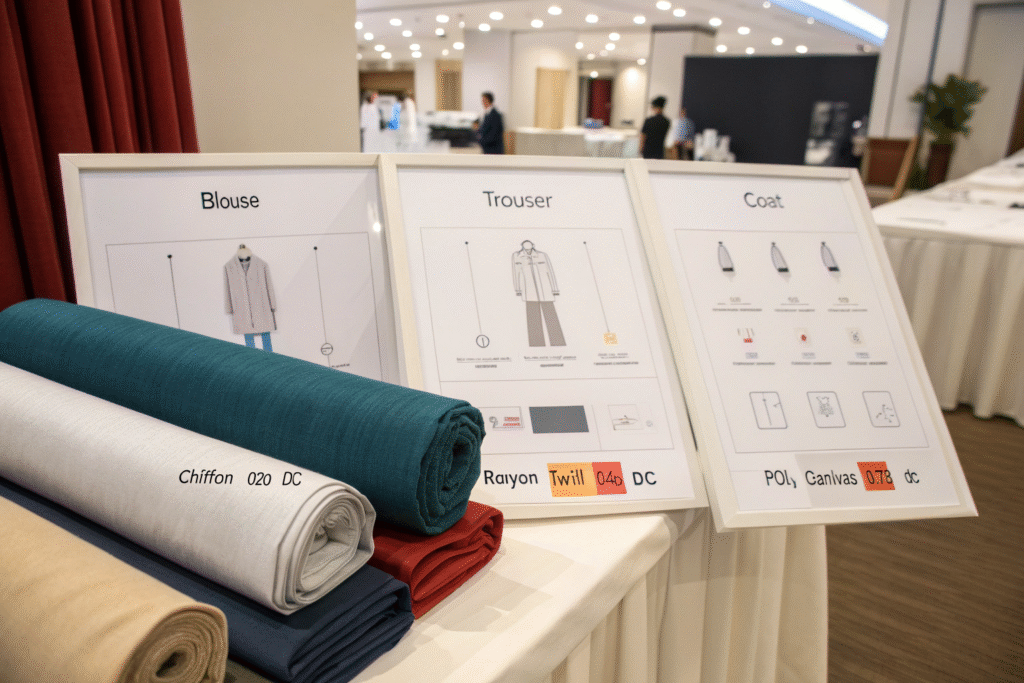
Matching Fabric to Drape Profiles
| Garment Type | Ideal Drape Coefficient | Recommended Fabric |
|---|---|---|
| Scarves, Wraps | 0.15–0.30 | Silk chiffon, viscose georgette |
| Dresses, Skirts | 0.30–0.50 | Rayon twill, modal jersey |
| Blazers, Pants | 0.50–0.70 | Cotton sateen, poly-rayon blends |
| Coats, Outerwear | 0.70–0.90 | Bonded canvas, wool melton |
| Aprons, Bags | >0.90 | Polyester canvas, coated oxford |
Our #FD950 Series rayon-twill blend, with a drape coefficient of 0.42, is popular for commercial womenswear due to its balance of flow and structure.
Why Does Fiber Blending Matter?
Blending natural and synthetic fibers allows fine-tuning of drapability. For example:
- Viscose + Nylon: Enhances fluidity while improving strength
- Polyester + Rayon: Cost-effective flow with better wrinkle resistance
- Cotton + Tencel: Balanced weight with soft drape
We engineer blends for brands targeting both luxury flow and structured form.
Where to Source Fabrics with Verified Drape Coefficients?
Many fabric listings show stretch and GSM—but few list drape coefficient. That’s why working with a transparent, test-driven supplier is key.
Request drape test data before sampling, especially for garments requiring specific flow or tailoring precision.
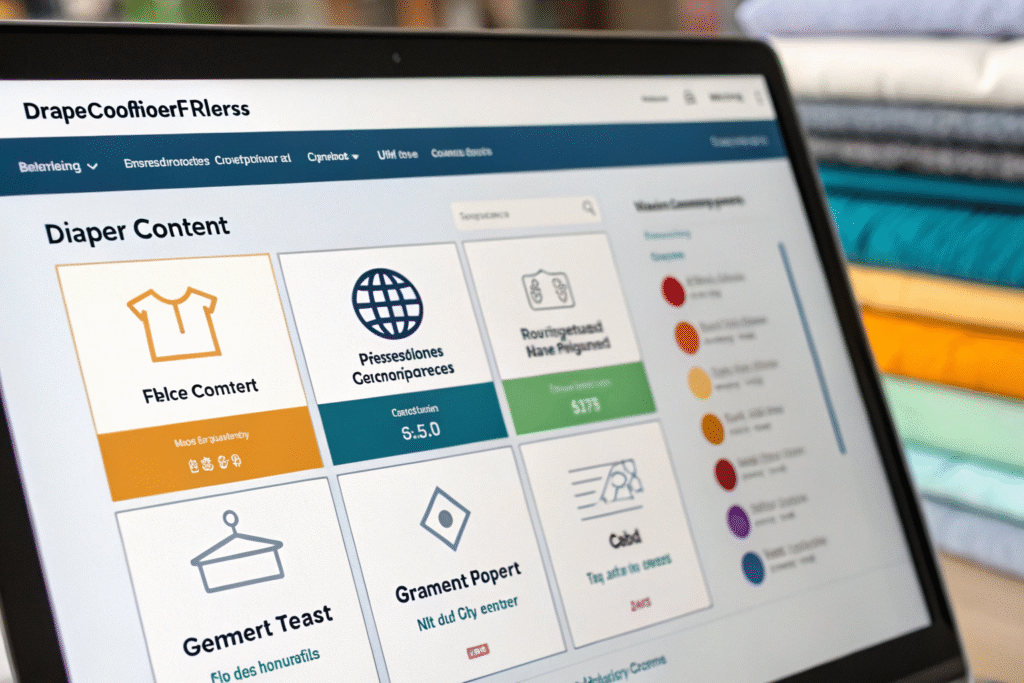
What to Ask Suppliers?
- Can you provide the ISO/ASTM drape test report?
- What’s the fabric’s drape coefficient and GSM?
- Is it heat-set or pre-shrunk to maintain drapability?
- How does it behave after 5–10 wash cycles?
- What is the MOQ for sampling and bulk?
At Fumao Fabric, we provide:
- Drape coefficient labeling on all swatches
- Lab-tested reports from CNAS-certified partners
- Small-batch MOQ starting from 300 meters/color
- Fast lab dips and virtual fitting visualization
Logistics & Sampling
We ship globally with DDP terms. Our test reports include:
- Pre-wash vs. post-wash drape coefficient comparison
- Shadow images and area calculations
- Stretch recovery and softness index
Our clients include dress brands in Italy, suiting companies in the U.S., and modestwear labels in the Middle East—each relying on data-backed fabric performance.
Conclusion
Fabric drapability is no longer a guessing game—it’s a quantifiable, testable property that defines how your garments move, fit, and feel. Whether you're creating a flowy dress or a structured pant, using the drape coefficient as your guide ensures consistency and quality across your product lines.
At Fumao Fabric, we empower designers with scientifically validated drape data, fast sampling, and fully customized fabric development. If you're planning a garment line that depends on flow, fall, or fluidity—start with the right metrics.
To request swatches with tested drape coefficients or develop your next collection, contact our Business Director Elaine at elaine@fumaoclothing.com. Let's bring your designs to life with precision and movement.
